East End Gateway and Long Island Rail Road Concourse Renovation
New York, New York, United States
The transformation of the landmark Farley Post Office Building restores the grandeur of rail travel that characterized the original Penn Station and elevates the way millions of people interact with one of the world’s largest cities.
Moynihan Train Hall is one of the most monumental civic projects undertaken in New York City in a generation. More than a century after the construction of the original Penn Station, and almost six decades after its demolition, the opening of the train hall on New Year’s Day in 2021 realized a long-held New York dream. The project, championed by the visionary Senator Daniel Patrick Moynihan in the 1990s, expands the existing Penn Station with a 255,000-square-foot, modern rail hub inside the Beaux-Arts Farley Building.
Situated across Penn Station between Eighth and Ninth Avenues and West 31st and West 33rd Streets, the train hall reverses the dark, overcrowded experience that so many commuters have endured for decades. It brings light to the station’s concourses for the first time in more than 50 years, increases the total concourse space by 50 percent, and restores the dignified sense of arrival that was lost with the destruction of McKim, Mead & White’s original station.

The only remnants of the original Penn Station are its concourses and platforms. In the 1960s, these subgrade spaces, once illuminated by a grand skylight, were covered over by low ceilings and downgraded to accommodate only 200,000 people. Five decades later, the number of people passing through the station every day swelled to more than 700,000, while the Farley Building—also designed by McKim, Mead & White, with a grand staircase and colonnade that echoed the firm’s design for Penn Station—had become almost entirely vacant. Built above Penn Station’s tracks, the Farley Building was the perfect place for a new train hall.
The demolition of the original Penn Station helped catalyze the modern historic preservation movement, and the lessons from that movement guided the creation of Moynihan Train Hall. Rather than treating the interior of the Farley Building as a blank slate, SOM developed a modern design that celebrates the historic, landmarked building. Completing an incredible transformation of a once insular workplace, the design brings in sunlight, emanates a sense of warmth, and integrates artistic elements into a civic space that travelers have not experienced in decades.
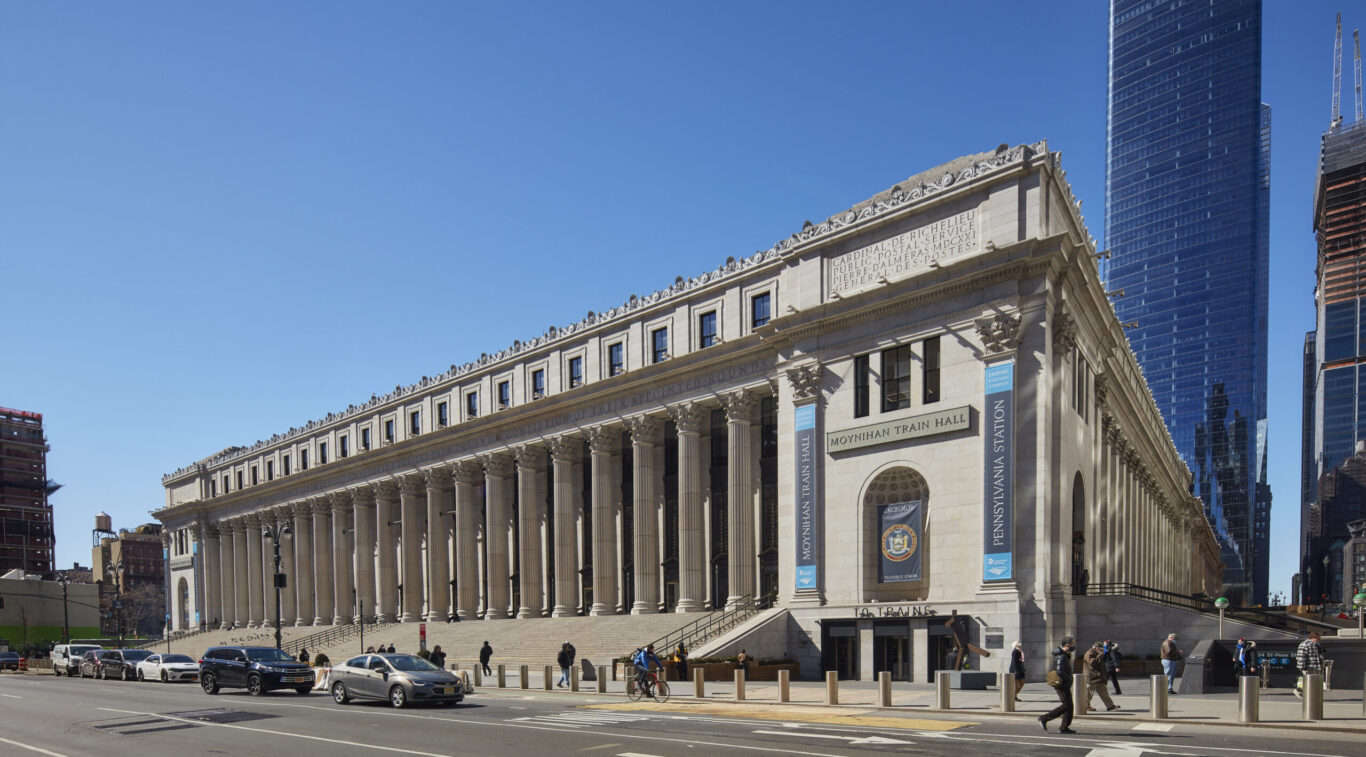
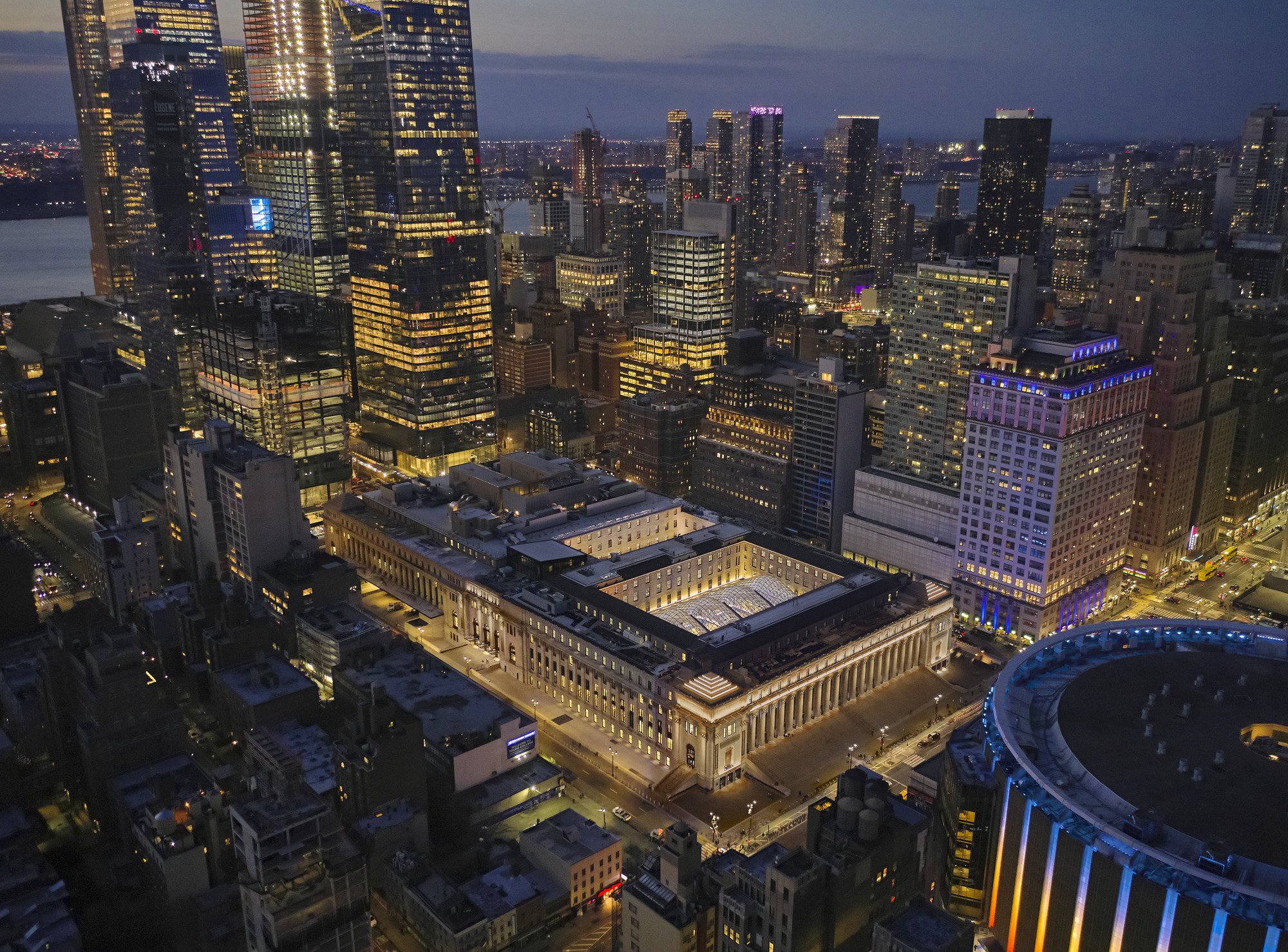
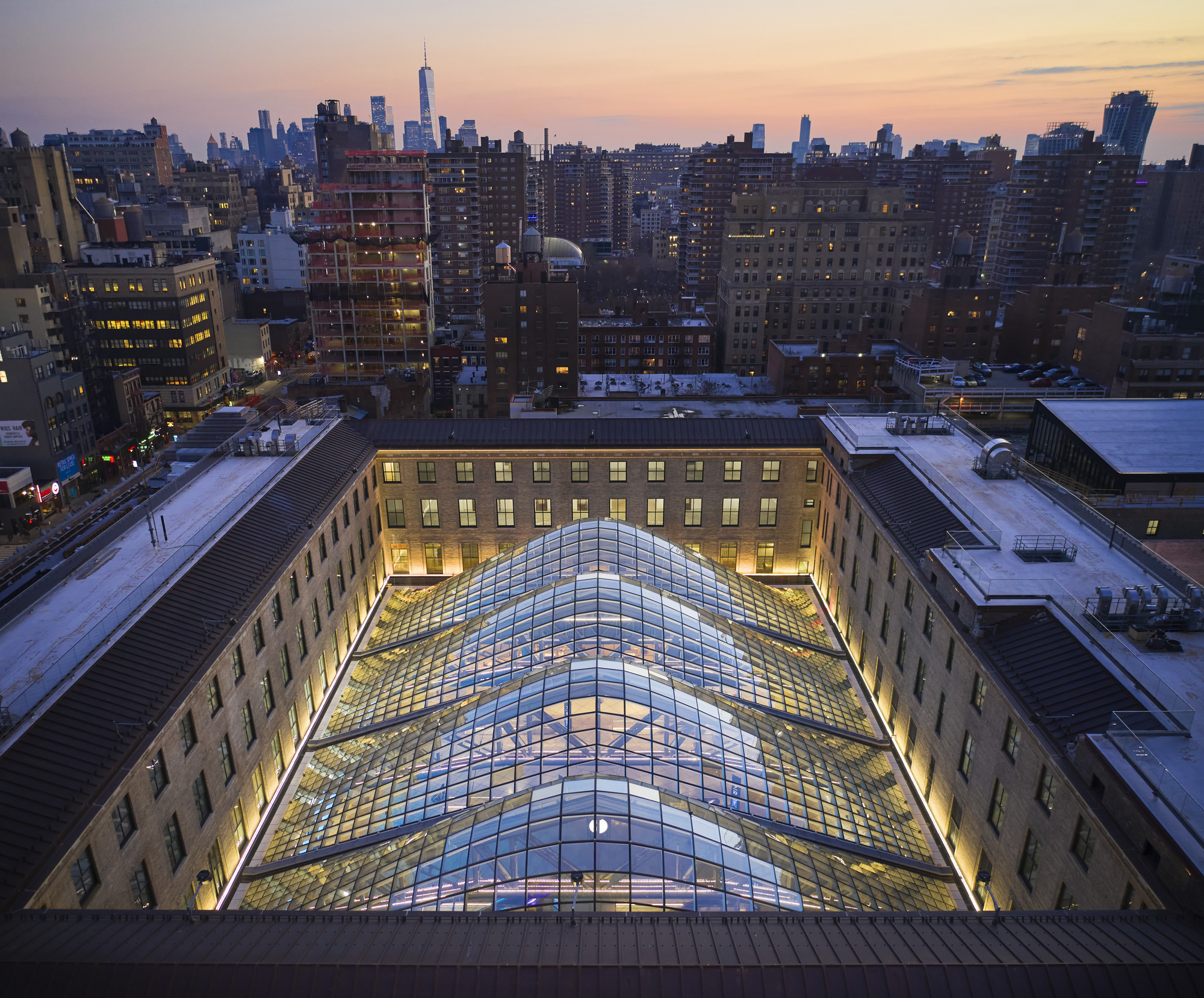
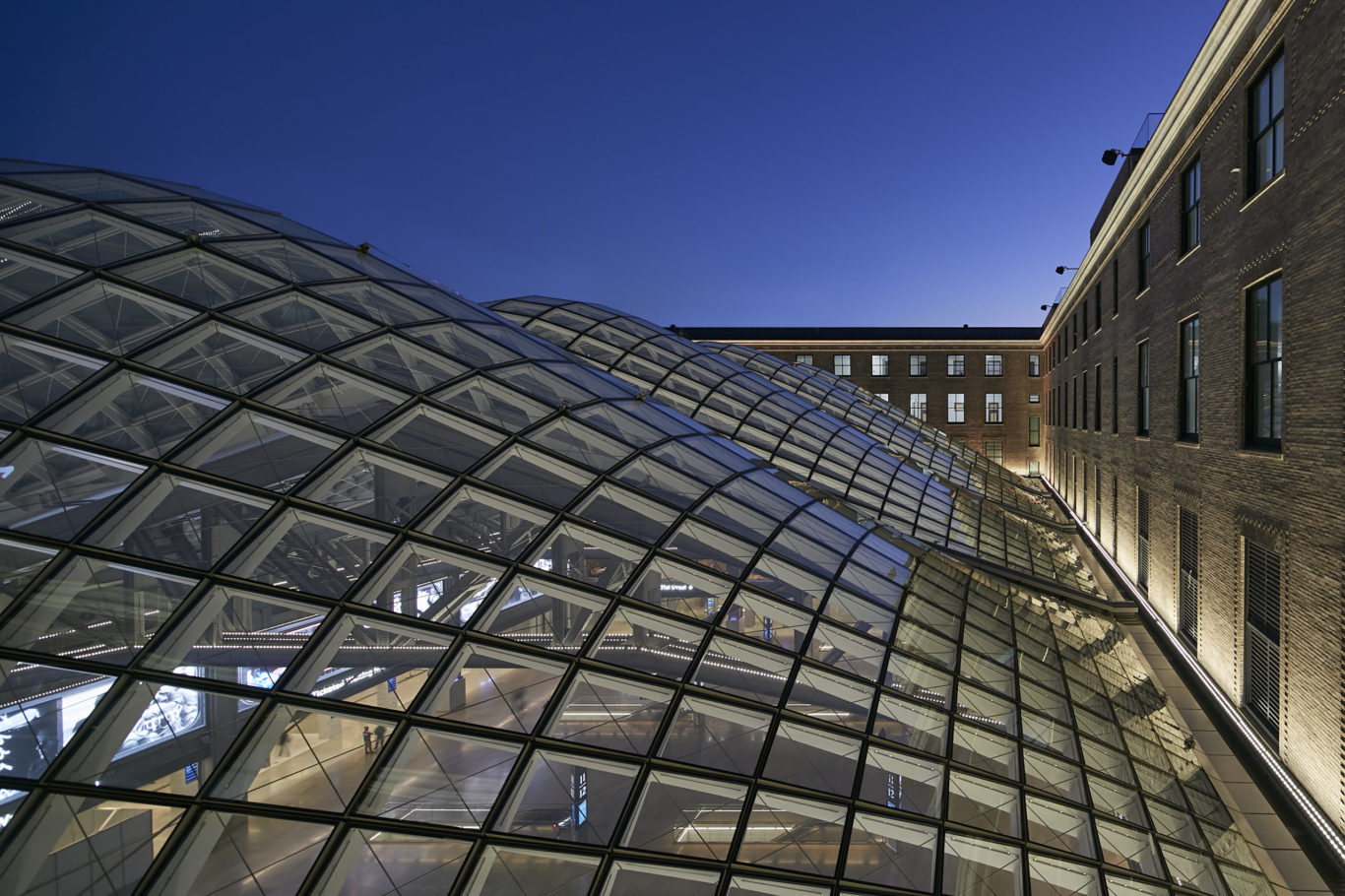
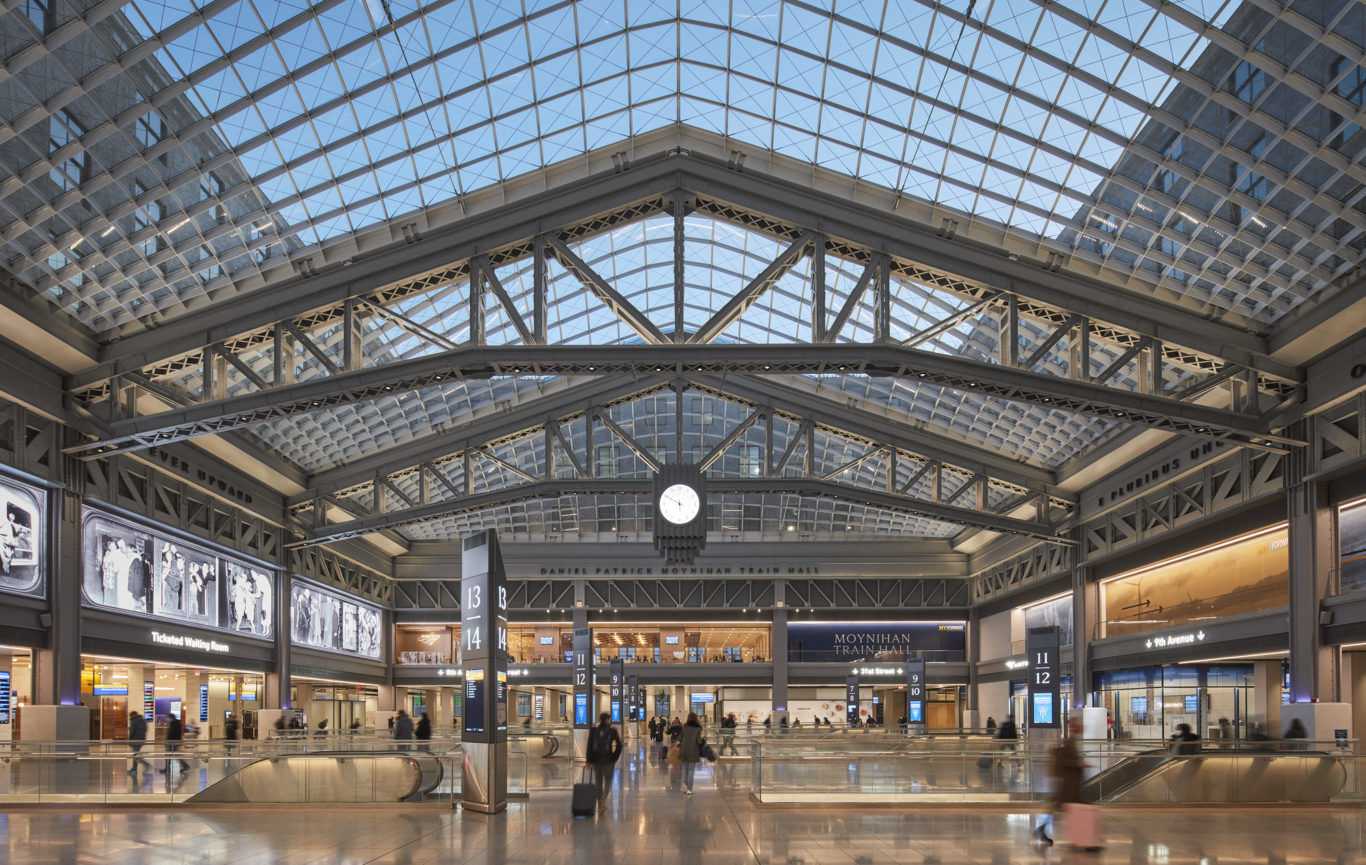
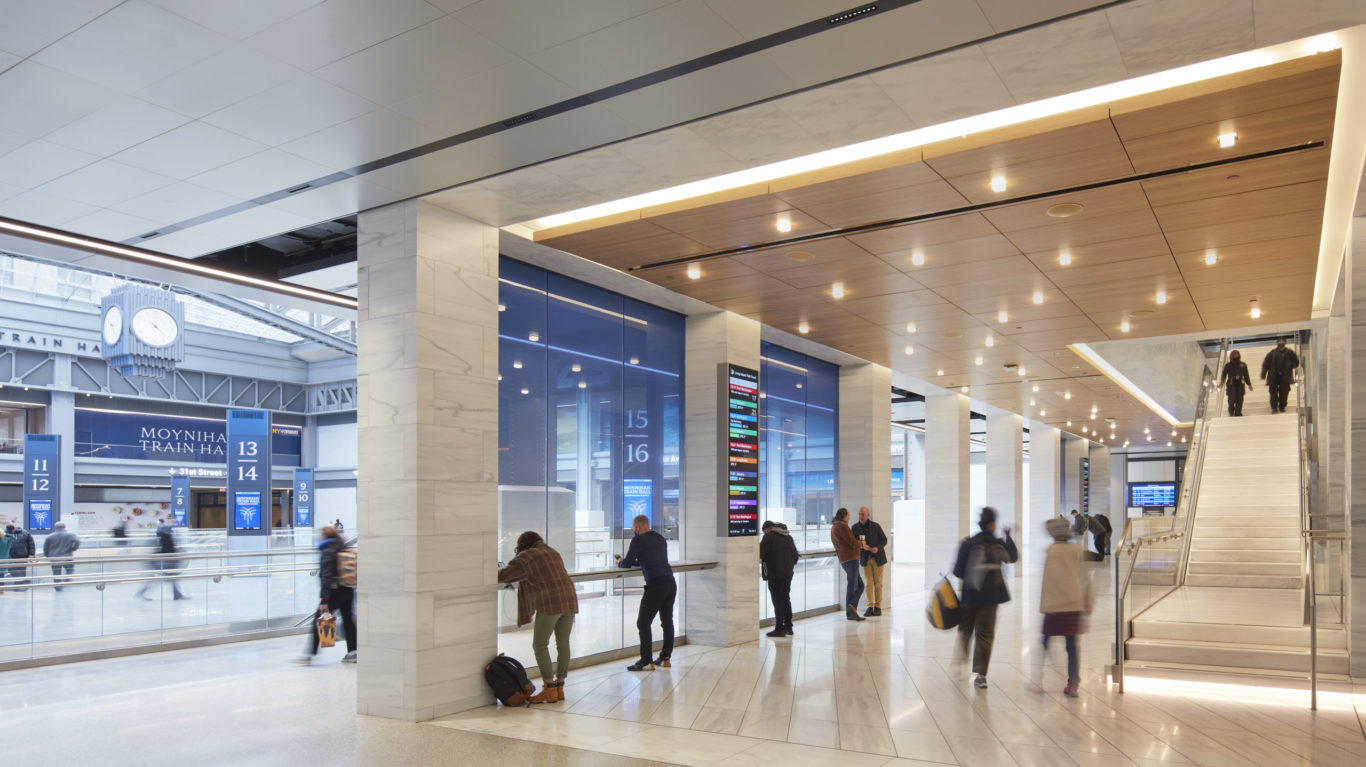
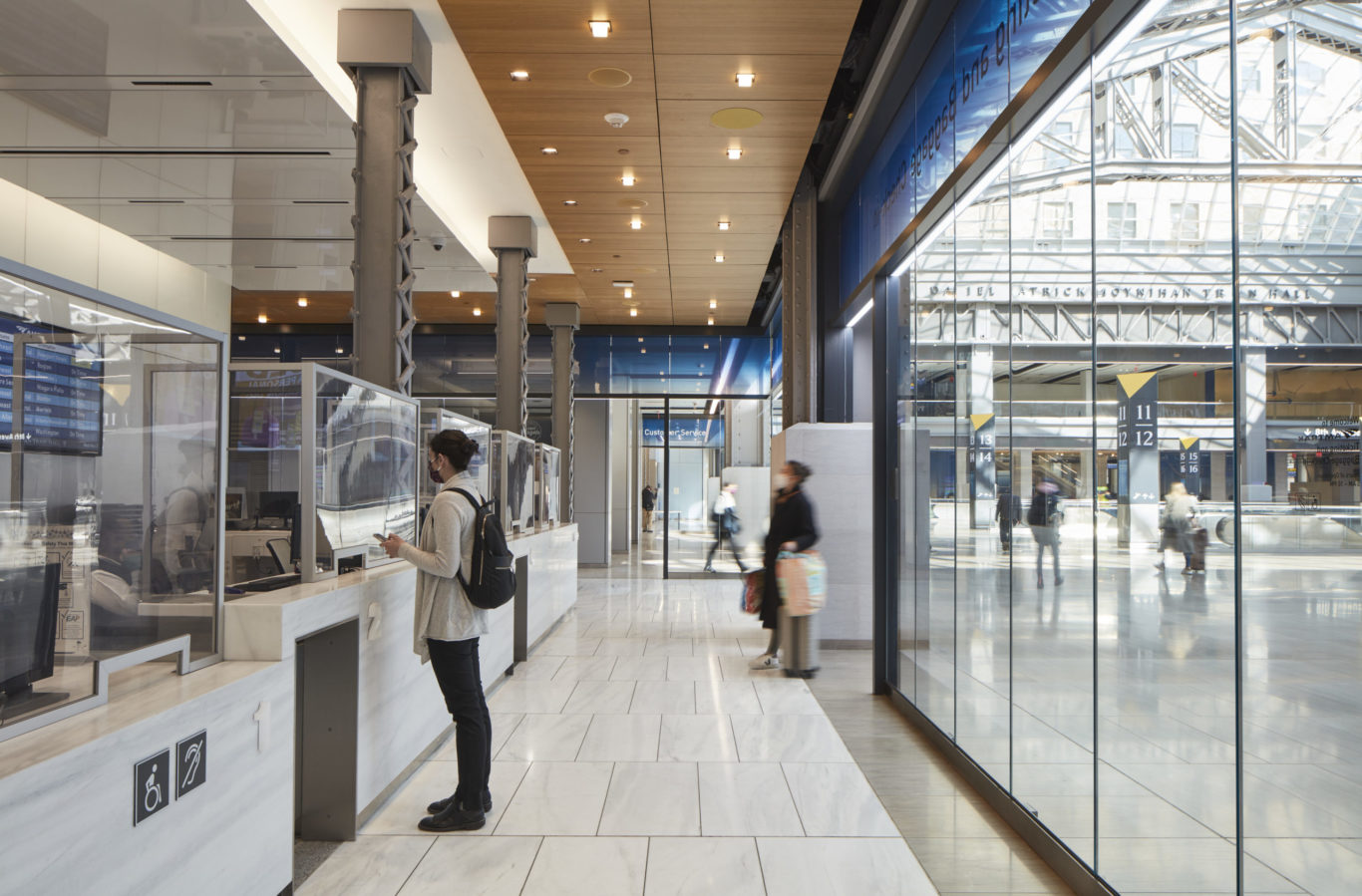
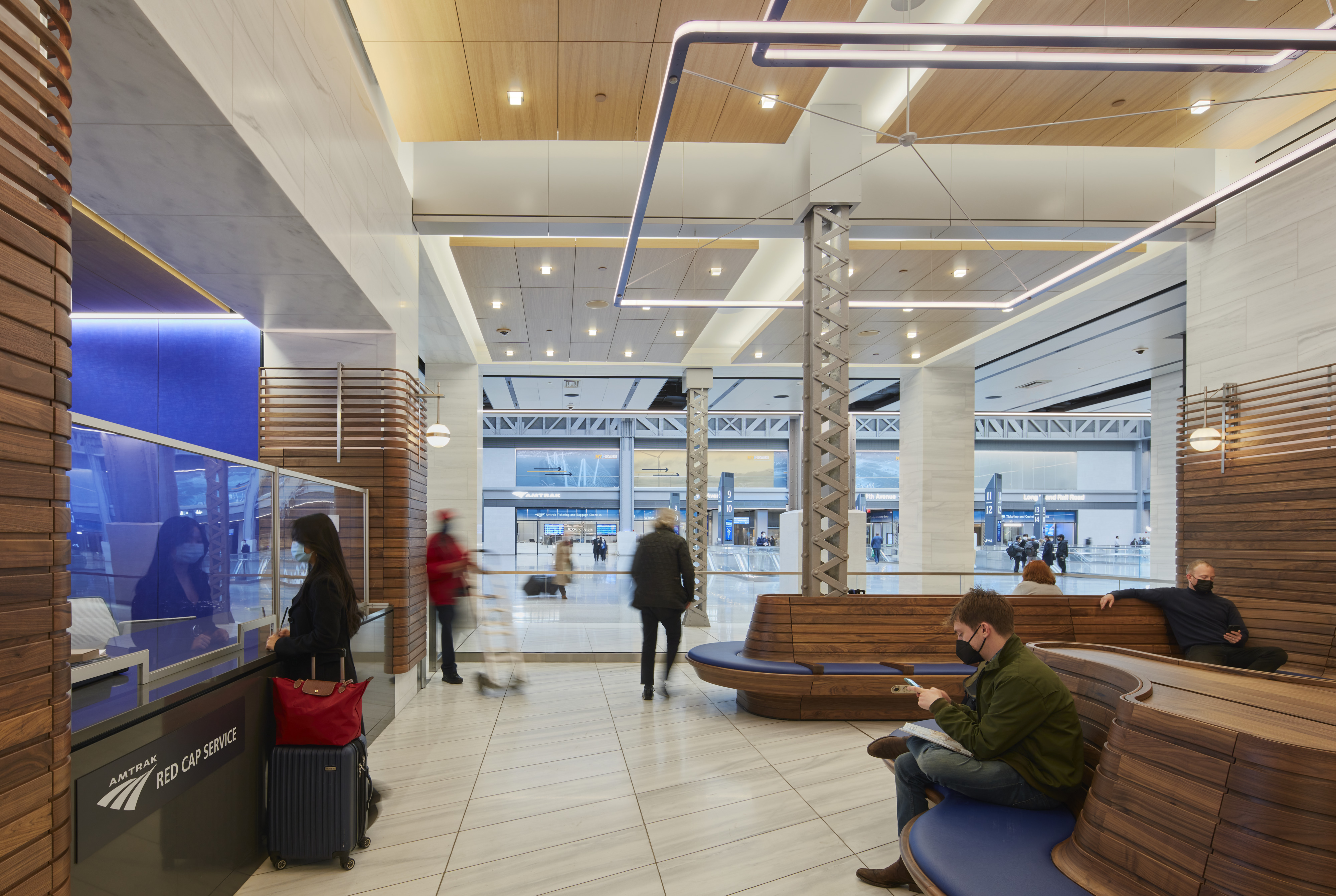
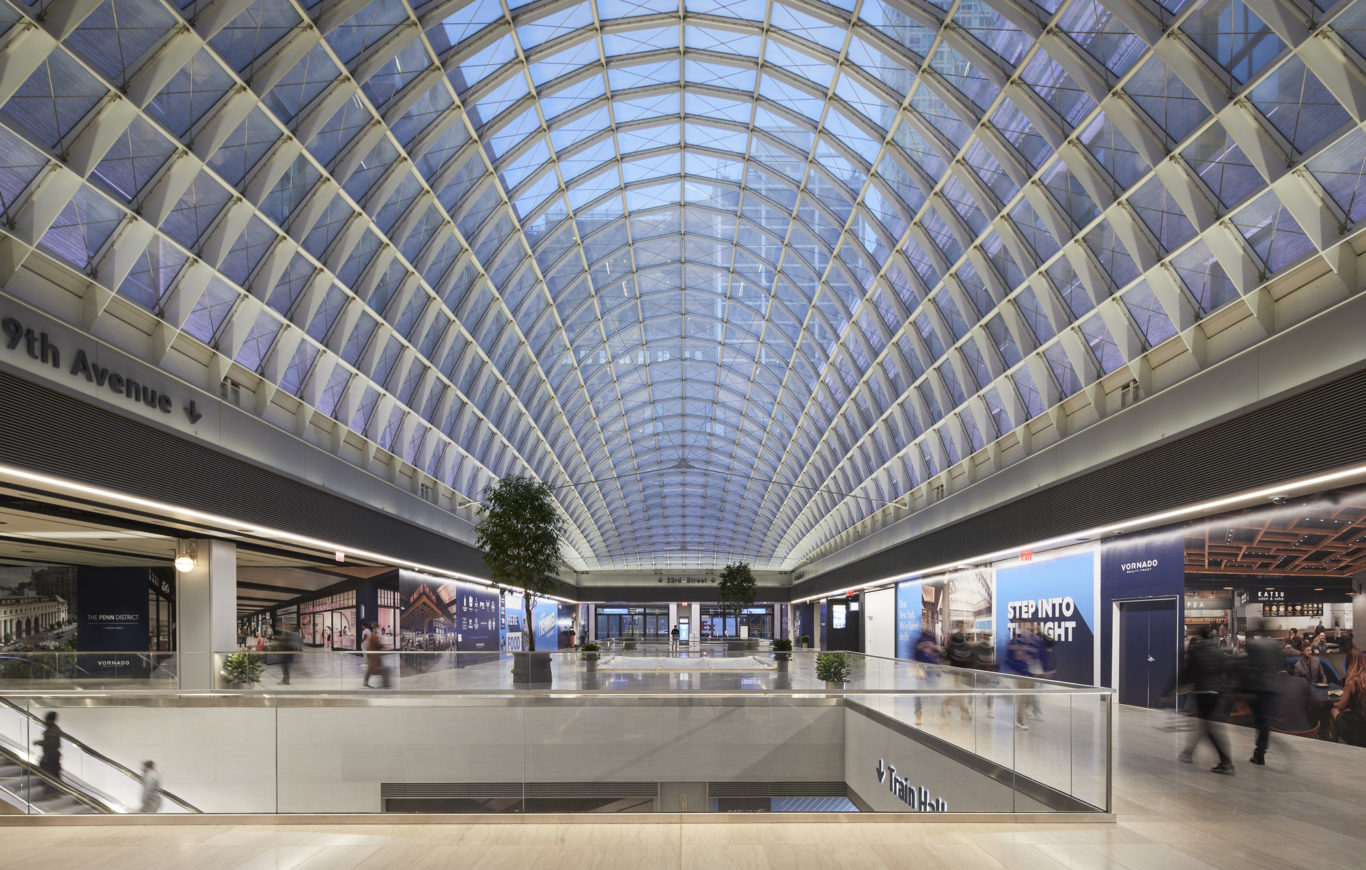
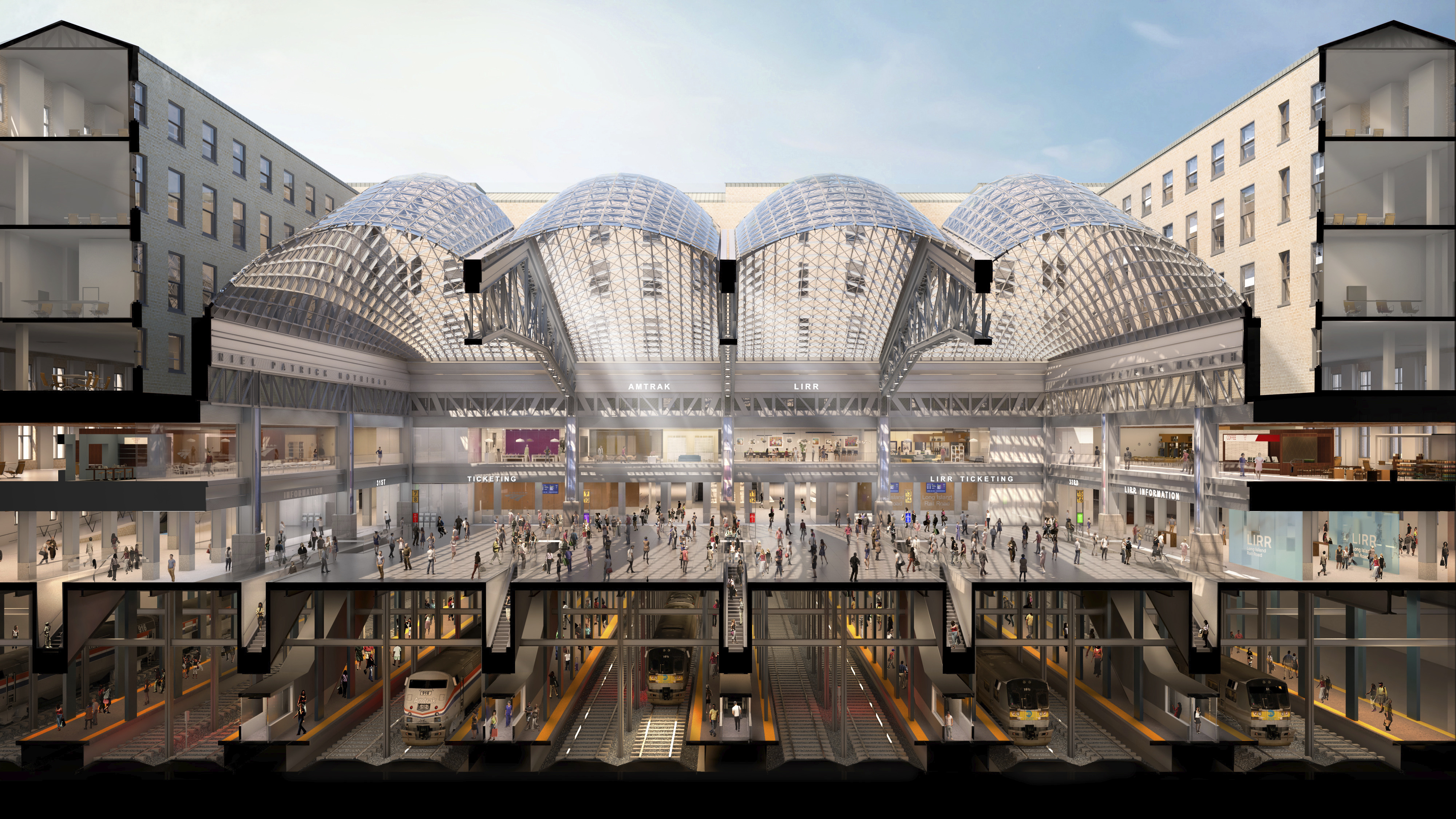
The main concourse is situated in the Farley Building’s former mail sorting room, a previously sky-lit space that was shrouded during World War II. Today, a new skylight traverses this concourse—bringing sunlight back inside while also reclaiming the magnificence of the original, sky-lit Penn Station. The new ceiling is composed of four catenary vaults, each of which comprise more than 500 glass and steel panels that create a moiré effect. At the edges of each vault, the panels thicken to sustain greater structural loads, while at the apexes, which rise 92 feet above the concourse, the panels’ depth lightens to enhance the airy ambience of the space.
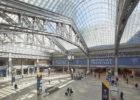
Three massive, original steel trusses, which were invisible to the postal workers a century ago, were uncovered to become a focal point of the design. As the framework for the new skylight, the bolted trusses enhance the sense of lightness within the train hall—seamlessly combining a contemporary architectural element with the workmanship of the original structure. Going beyond preservation, the skylight at Moynihan is a rejuvenation and an exemplar for how to reimagine historic buildings.
A project of such an immense civic scale can take time to come together, and it’s no secret that the completion of Moynihan Train Hall was decades in the making. SOM led the design vision nearly every step of the way, starting in 1998, when the firm was tasked with bringing Senator Moynihan’s vision to life.
The first design, unveiled by President Bill Clinton in 1999, would have converted about 30 percent of the Farley Building into a train hall. A concave glass structure would have risen 150 feet above a mid-block ticketing hall to announce the civic presence of the station, while a skylight above the former mail sorting room would have rested on the building’s original steel trusses. Seven years later, SOM’s second proposal was designed with barrel-vaulted skylights, and included a plan for an entrance on Ninth Avenue in anticipation of new development farther west.
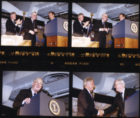
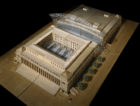
Across the years, all the way through the final design, generations of SOM architects were united by a common goal: to increase concourse space at the busiest station in the Western Hemisphere, and to restore the long-lost grandeur of arriving to New York. The previous designs were a harbinger of the future—the final skylight blends elements of the ideas that came before. Manhattan’s westward development also became more than just a plan. After work began on Manhattan West and Hudson Yards, SOM designed Moynihan Train Hall in direct response to a rapidly evolving neighborhood, one that brings the entire Penn Station complex from the edge of the West Side to the center.
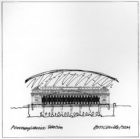

Far more than a rail hub, Moynihan Train Hall is designed to be a mixed-use destination. The reshaping of the Annex fully extends the train hall from Eighth Avenue to Ninth Avenue, and in this additional space, retail and offices elevate the building into a vibrant hub of activity. The retail space totals 120,000 square feet, and about 730,000 square feet of commercial space on the upper floors serves as offices for Meta, Amtrak, the LIRR, and the continued presence of the United States Postal Service.
The ground-level retail space also helps to form a contiguous pedestrian experience spanning from Seventh Avenue through Hudson Yards and the High Line. Starting at SOM’s East End Gateway on Seventh Avenue, New Yorkers, commuters, and visitors from around the world can enter Penn Station, walk through a redesigned LIRR concourse and the West End Concourse, and move through Moynihan Train Hall. From Ninth Avenue, pedestrians can cross the street to Manhattan West, which leads to Hudson Yards and, in 2023, will connect to the High Line via a set of two new pedestrian bridges designed by SOM—completing a long series of projects along this route that SOM has helped create.
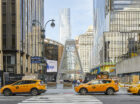


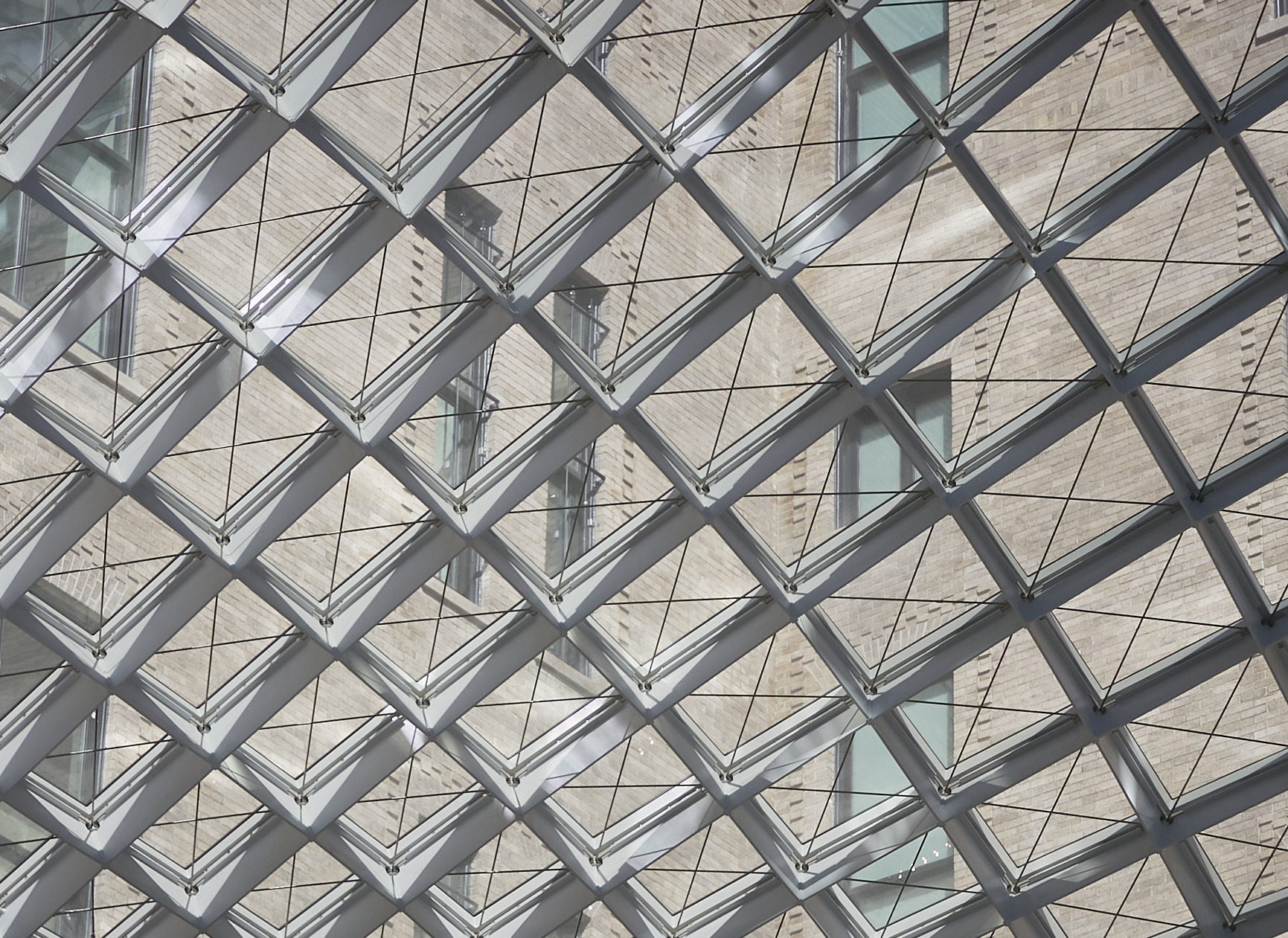

It delivers on its promise, giving the city the uplifting gateway it deserves. When was the last time you could say something like that about a public works project?
Moynihan Train Hall is accessible through a variety of grand entrances. On Eighth Avenue, two entrances flank the Farley Building’s staircase and lead directly to the main concourse. These ingress points are supplemented by entrances on 31st Street, 33rd Street, and Ninth Avenue. Along 31st and 33rd Streets, new mid-block canopies help identify the civic presence of the train hall and complement the original arched windows of the Farley Building. Inside, public art installations commissioned by Empire State Development, in partnership with the Public Art Fund, are located at both mid-block entrance ceilings—with the work of artist duo Elmgreen & Dragset at 31st Street and artist Kehinde Wiley at 33rd Street. In the center of the mid-block passageway, between the murals, a second skylight brings in natural illumination and maintains the essence of the main concourse.
Carefully selected materials unify the entrances and concourses. Tennessee Quaker Gray marble—the same material used for the Farley Building’s historic facade and for Grand Central Terminal—lends to Moynihan Train Hall a sense of serenity and grandeur.
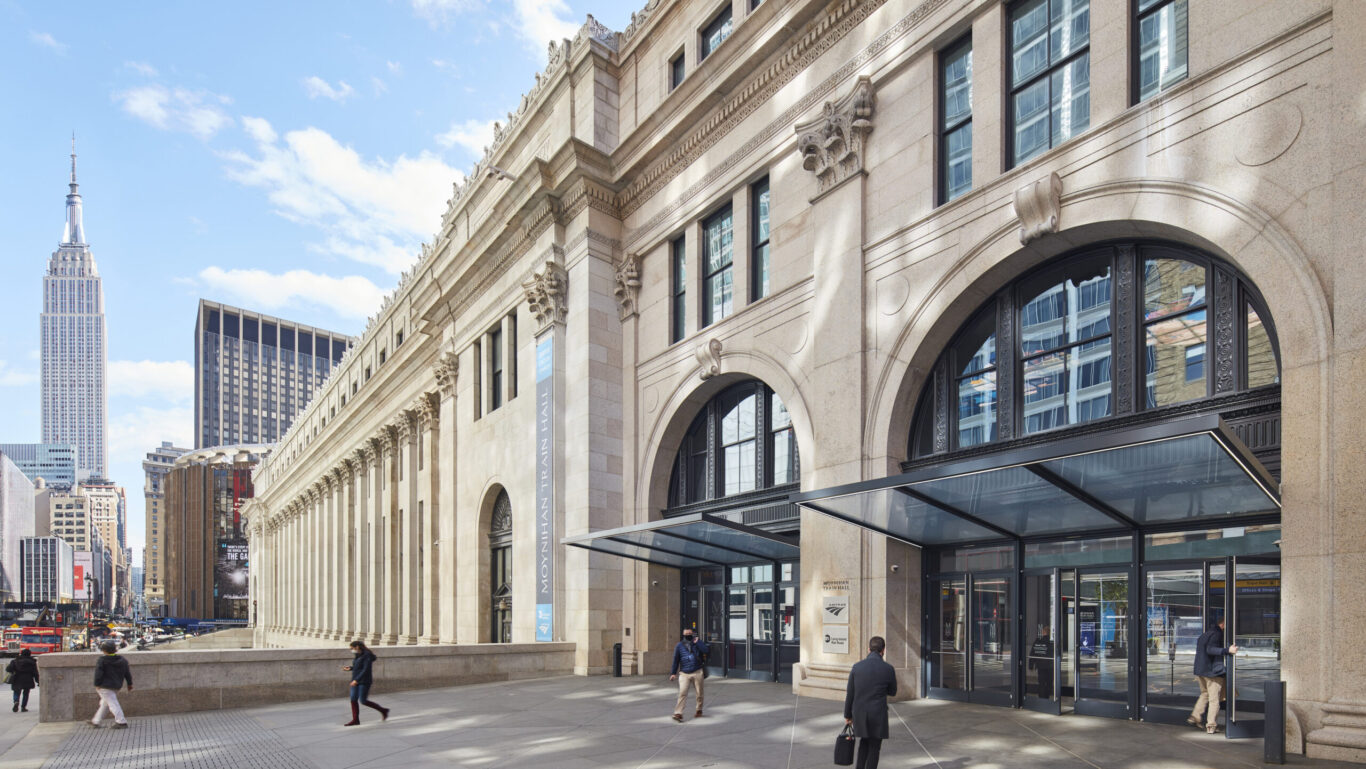
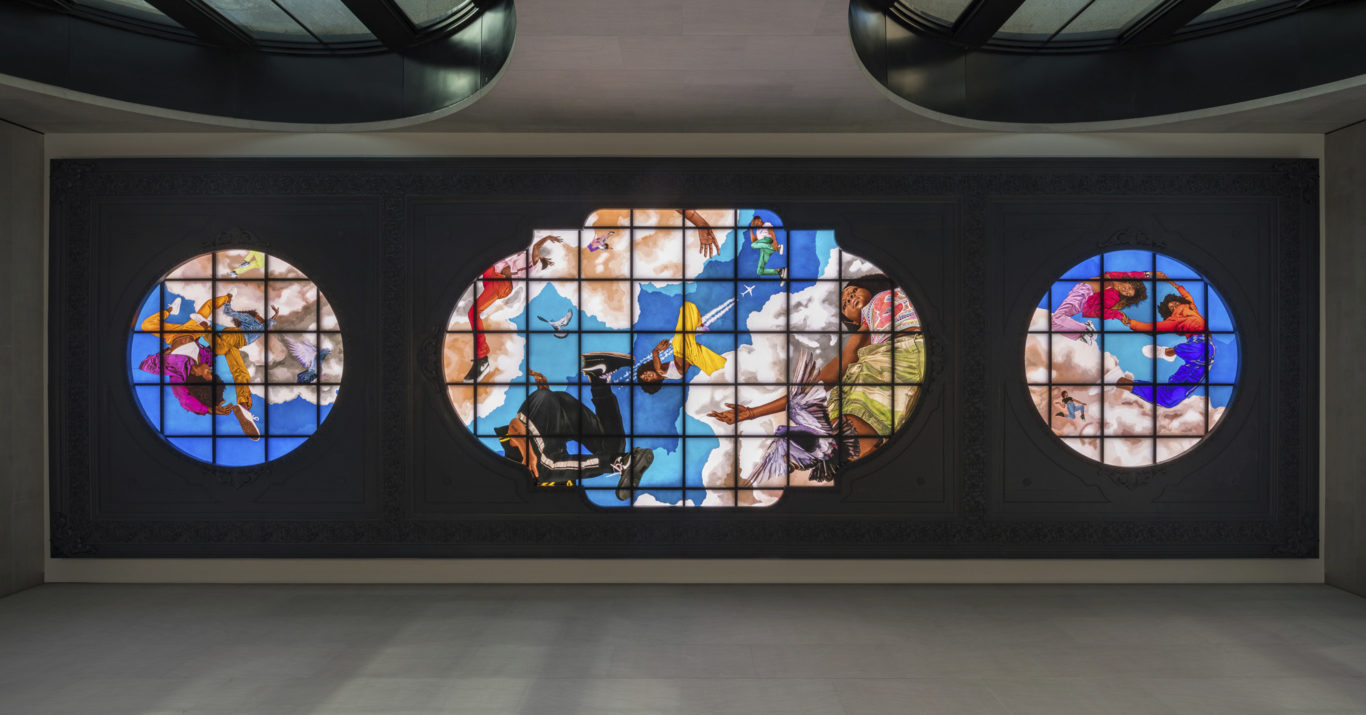
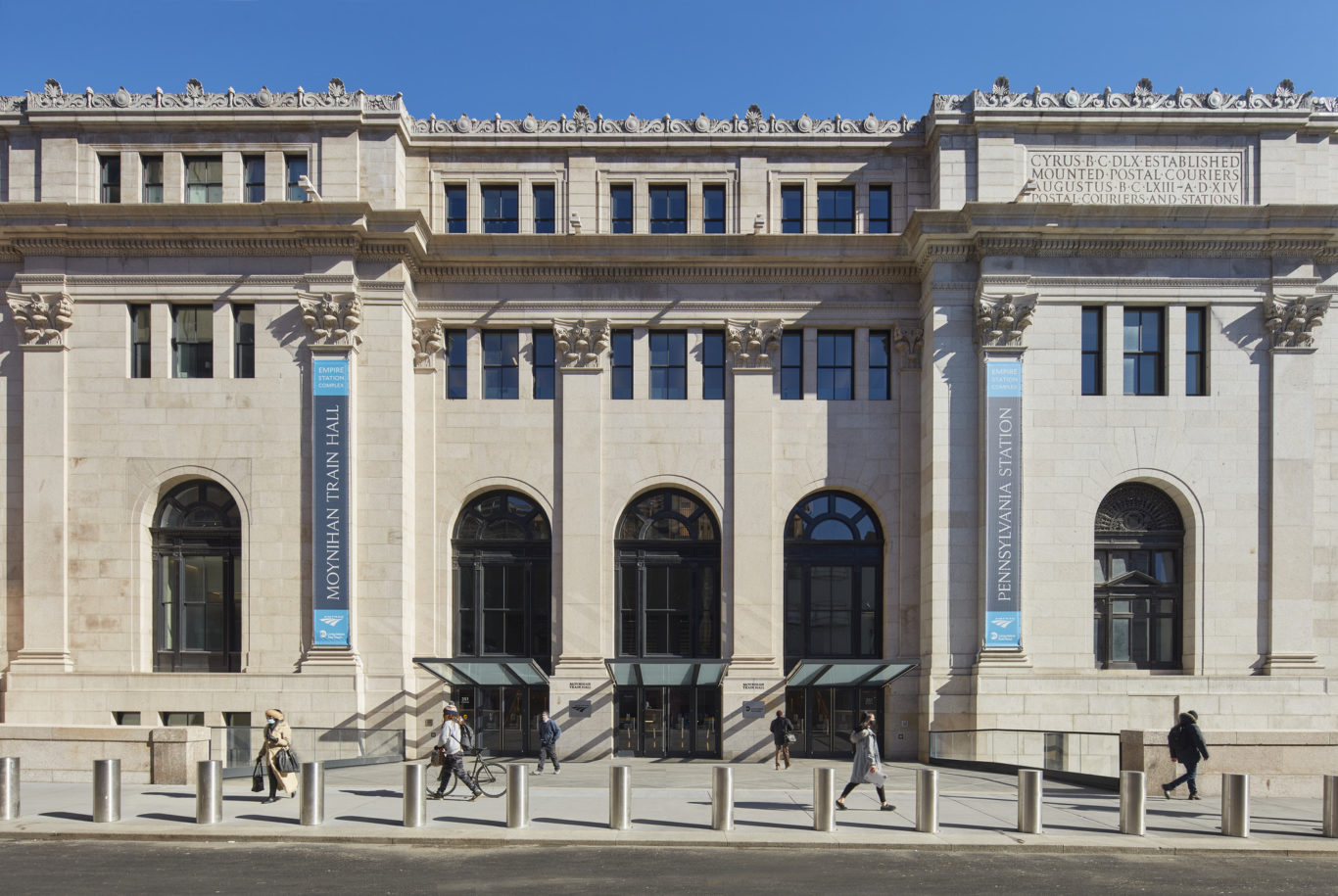
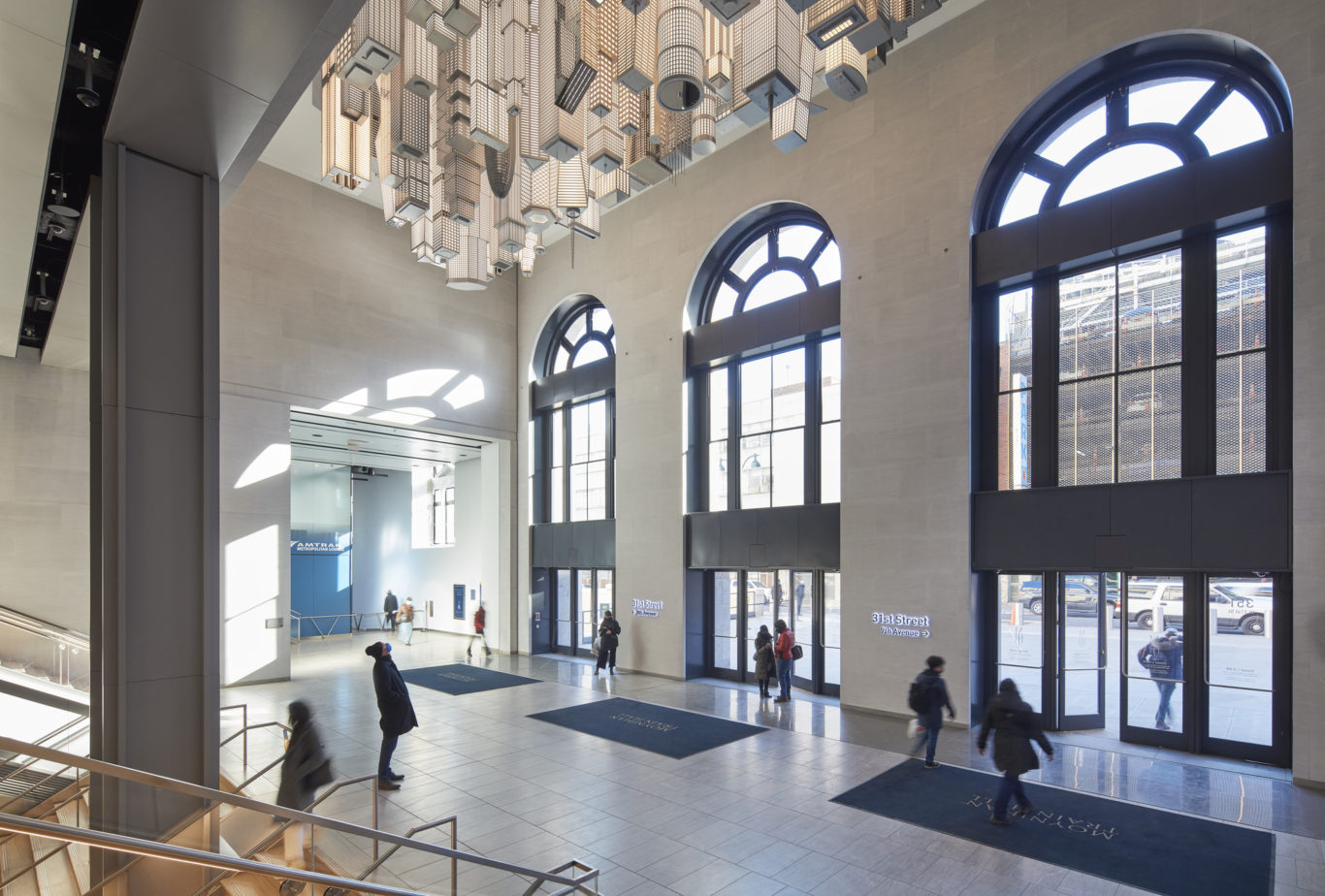
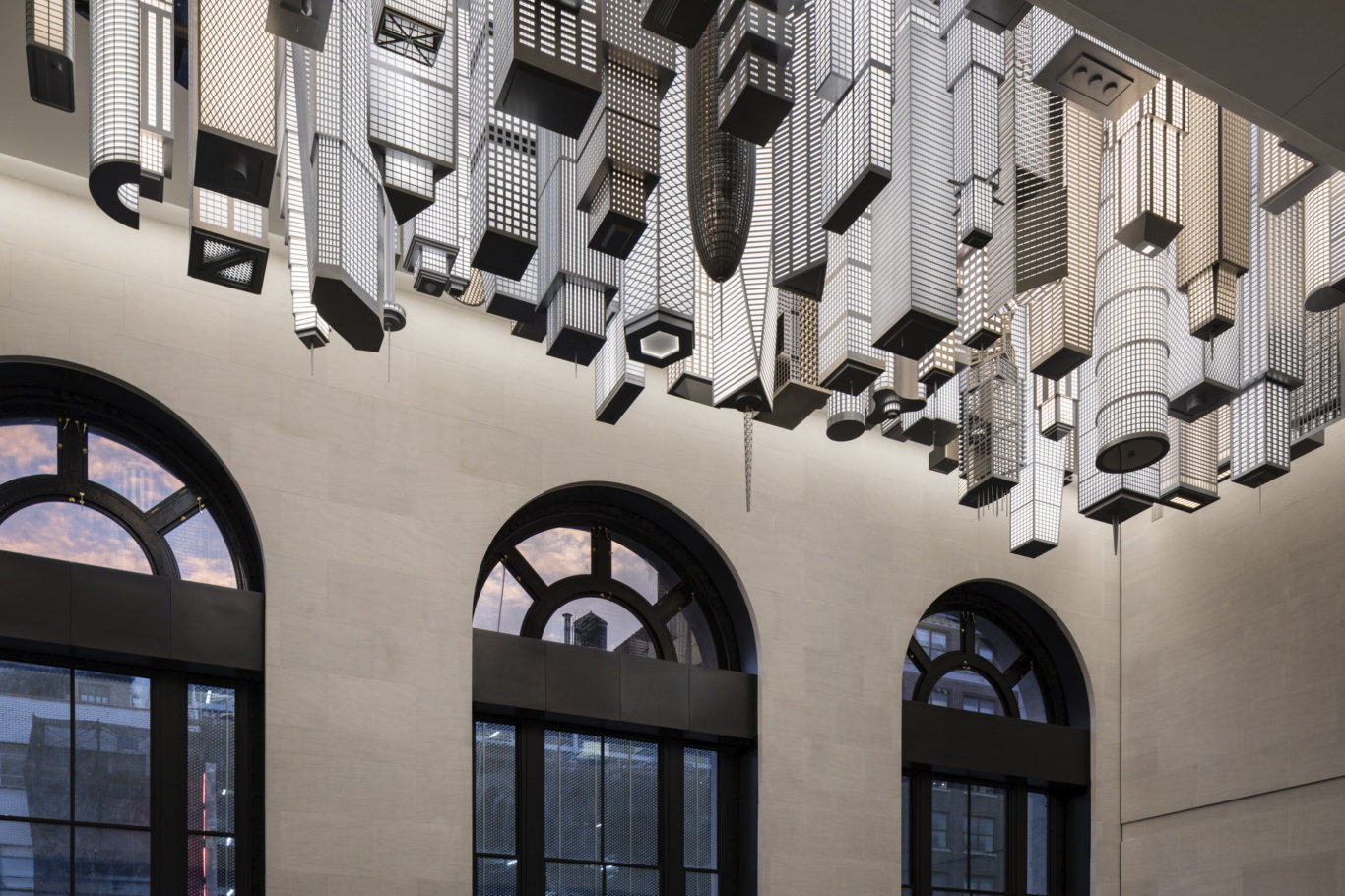
SOM designed Moynihan Train Hall in multiple phases. Phase I, completed in 2017, encompassed the construction of the new West End Concourse, a significant widening of an existing concourse connecting Penn Station and the Farley Building. The new train hall—the second phase—primarily serves Long Island Rail Road and Amtrak riders. It provides direct access to 17 of Penn Station’s tracks via 11 new escalators, 15 new elevators, and 10 extended or improved elevators. It adds crucial public amenities, including large seating areas, commercial space, and direct subway access. With new mechanical systems, among various other sustainability measures, the project is also the first in the world to achieve LEED BD+C for Transit certification, with a silver rating.

In addition to welcoming hundreds of thousands of daily passengers by LIRR and Amtrak, the train hall serves as an iconic gathering place on Manhattan’s West Side. Its generous civic spaces, public artworks, and extensive pedestrian circulation make it an asset for the district. A new entrance on Ninth Avenue reshapes the Annex—a former parking garage and office space added to the Farley Building in the 1930s—into a 21st-century, mixed-use anchor for the neighborhood. The entrance is flanked by restaurants, and aligns directly with the entry to the new Manhattan West development.
New York, New York, United States
01/